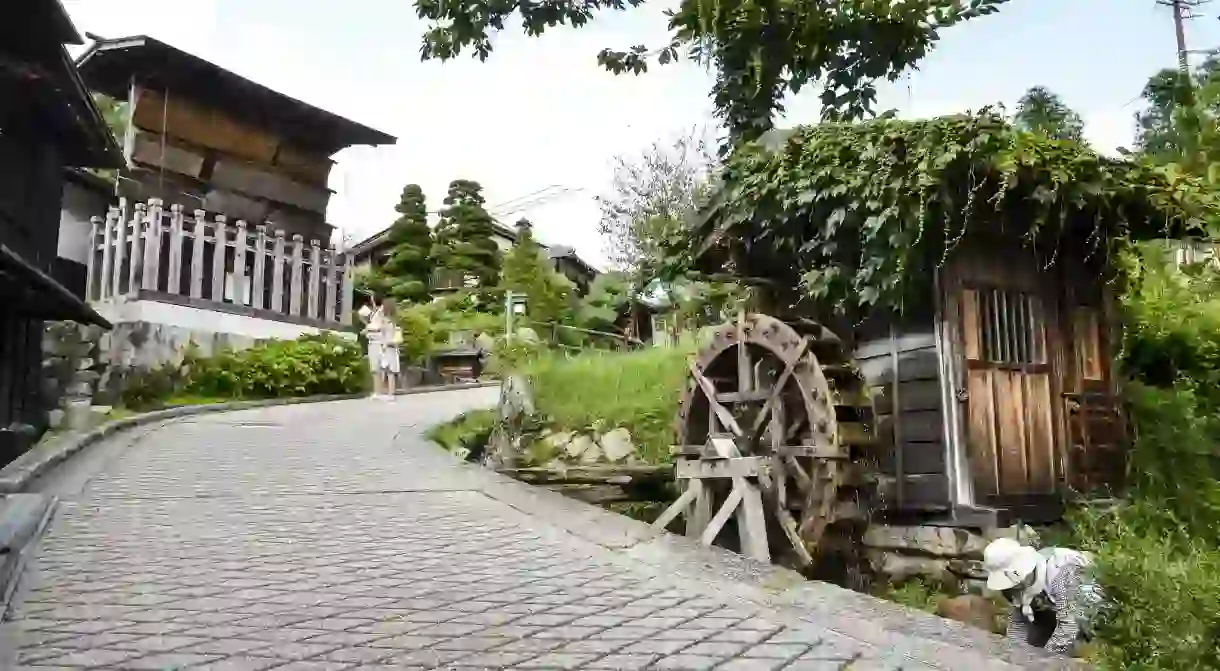11 Towns Lining the Ancient Kisoji Trade Route

Established in the beginning of the Edo era (1603 – 1867), Kisoji was an ancient trade route stretching from Nagano to Gifu. Due to the strict regulations of the shogun, travelers were required to make the grueling journey on foot, and several “post towns” were established along the route to provide a place to rest. The days of the shogun have long since passed but a number of the old towns along the Kisoji route have been preserved.
Niekawa-juku
The first stop along the Kisoji route, the original kanji (Chinese characters) for this route was 熱川, which means “warm river”, because of the natural hot springs in the area.
Narai-juku

Known for its high elevation and long row of Edo-era houses, Narai-juku has since been recognized as a “National Important Preservation District for Groups of Historic Buildings” by the Japanese government. The town is maintained through a system of government grants and most of the original architecture still stands.
Yabuhara-juku
This is the last stop before the Torii Pass, which was considered to be the most challenging section of the route to traverse. Today, Yabuhara is known for small souvenirs made from the birch trees that grow in the area.
Miyanokoshi-juku
Miyanokoshi is the former home of Lord Kiso, an ancient general who lived from 1154 to 1184. A number of artifacts connected to him have been preserved in the town.
Fukushima-juku
This is the mid-point of the Kisoji trade route. Here, travelers were subject to inspection and forced to pay a tax before moving on.
Agematsu-juku
Formerly a successful logging town, houses leftover from the Edo era can still be found in the Kan-machi section of this small post town.
Suhara-juku
Suhara was technically the first post town to best established along the Kisoji trade route; however, the entire town was destroyed by a massive flood in 1717 and then rebuilt in a different location.
Nojiri-juku
Known for its winding roads, Nojiri is the second-longest post town after Narai-juku. Unfortunately, most of the town was destroyed in a fire in 1791.
Midono-juku
Nearly 100 years after the previous town caught fire, most of Midono was destroyed in another large fire. Instead of rebuilding in the same location, the town was moved and rebuilt to incorporate the railway system that had already begun growing in Japan by that time.
Tsumago-juku
Possibly the most popular present-day tourist destination along the Kisoji, Tsumago has been fully restored to reflect the appearance of an authentic Edo era post town. Restoration began in the late 1960s, and while tourism is the primary business of the town, most of the homes are actually inhabited by Japanese families.

Magome-juku
The final stop along the Kisoji, Magome is the only post town on the trade route that isn’t located in Nagano. In its early days, the small town enjoyed a great deal of prosperity – until the railroads were built and Magome was not included as one of the stops. Much of the town has been restored and is now a popular tourist destination.













